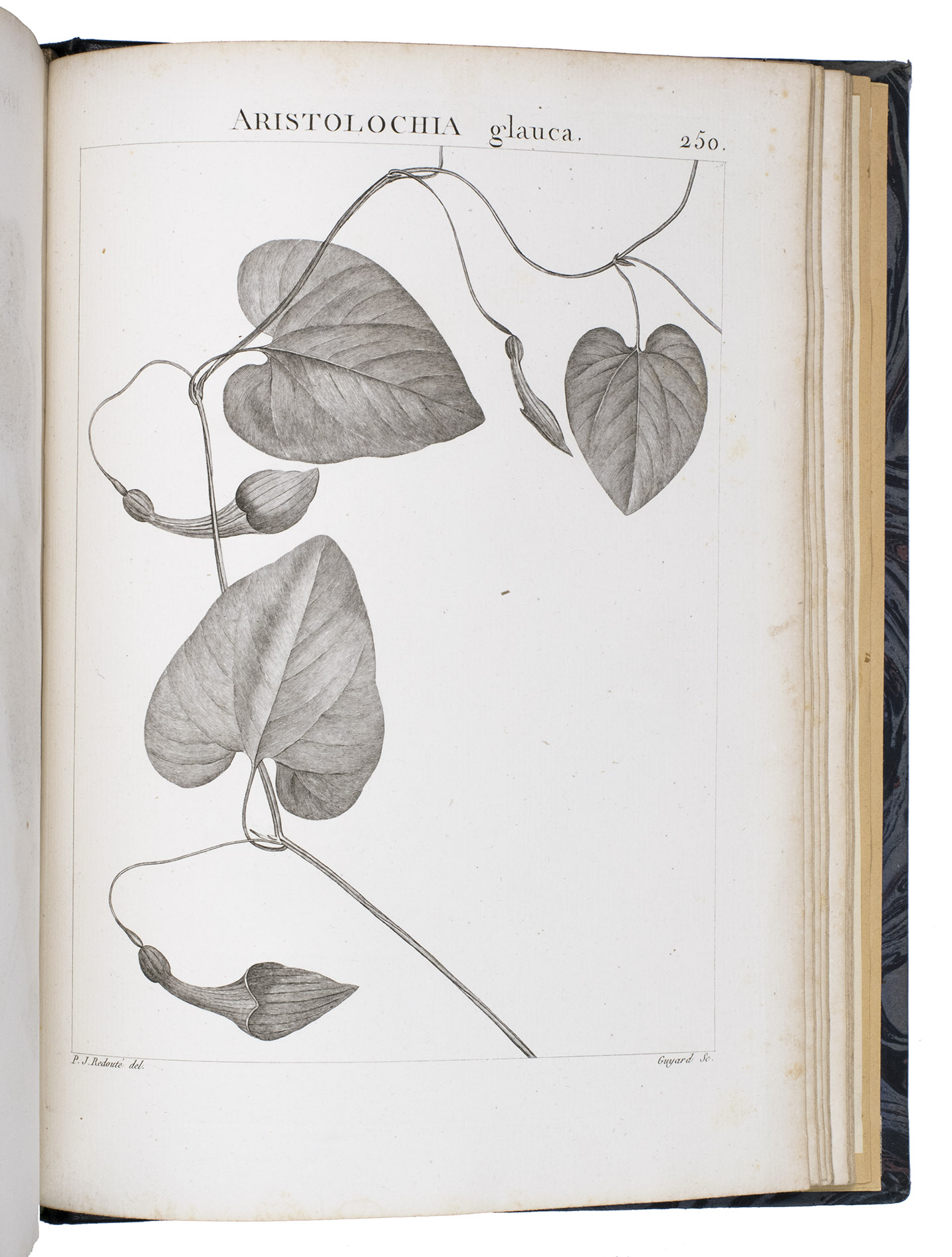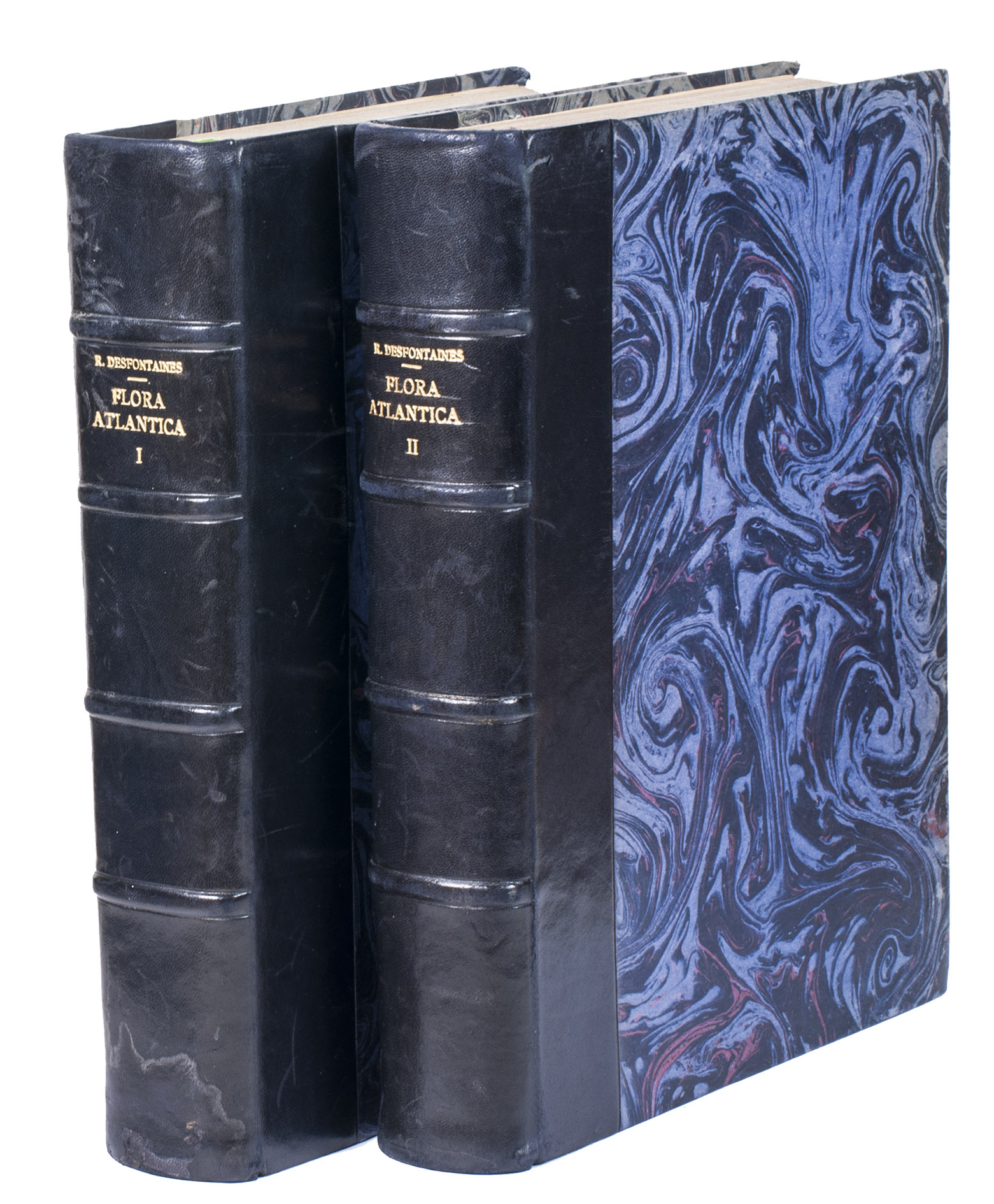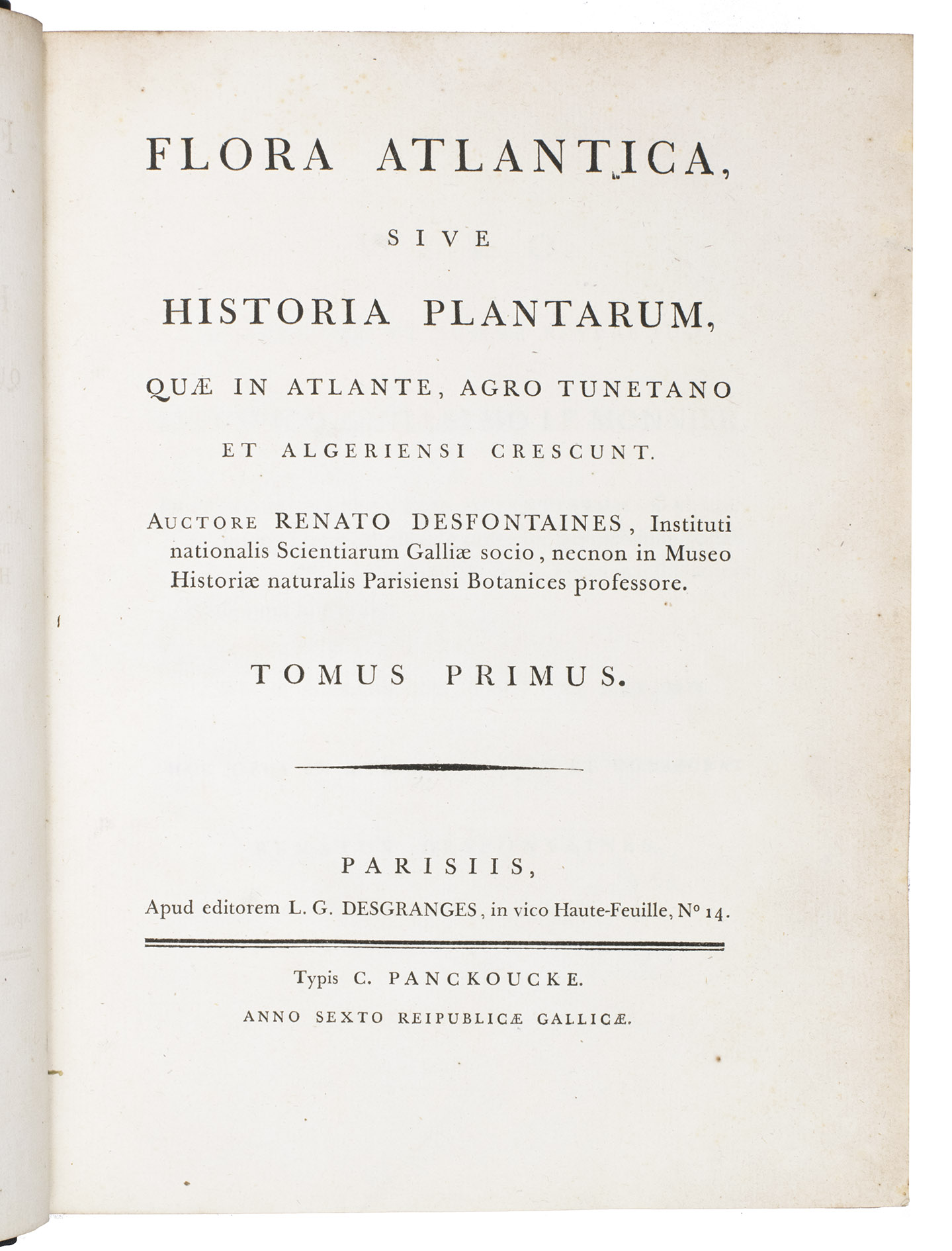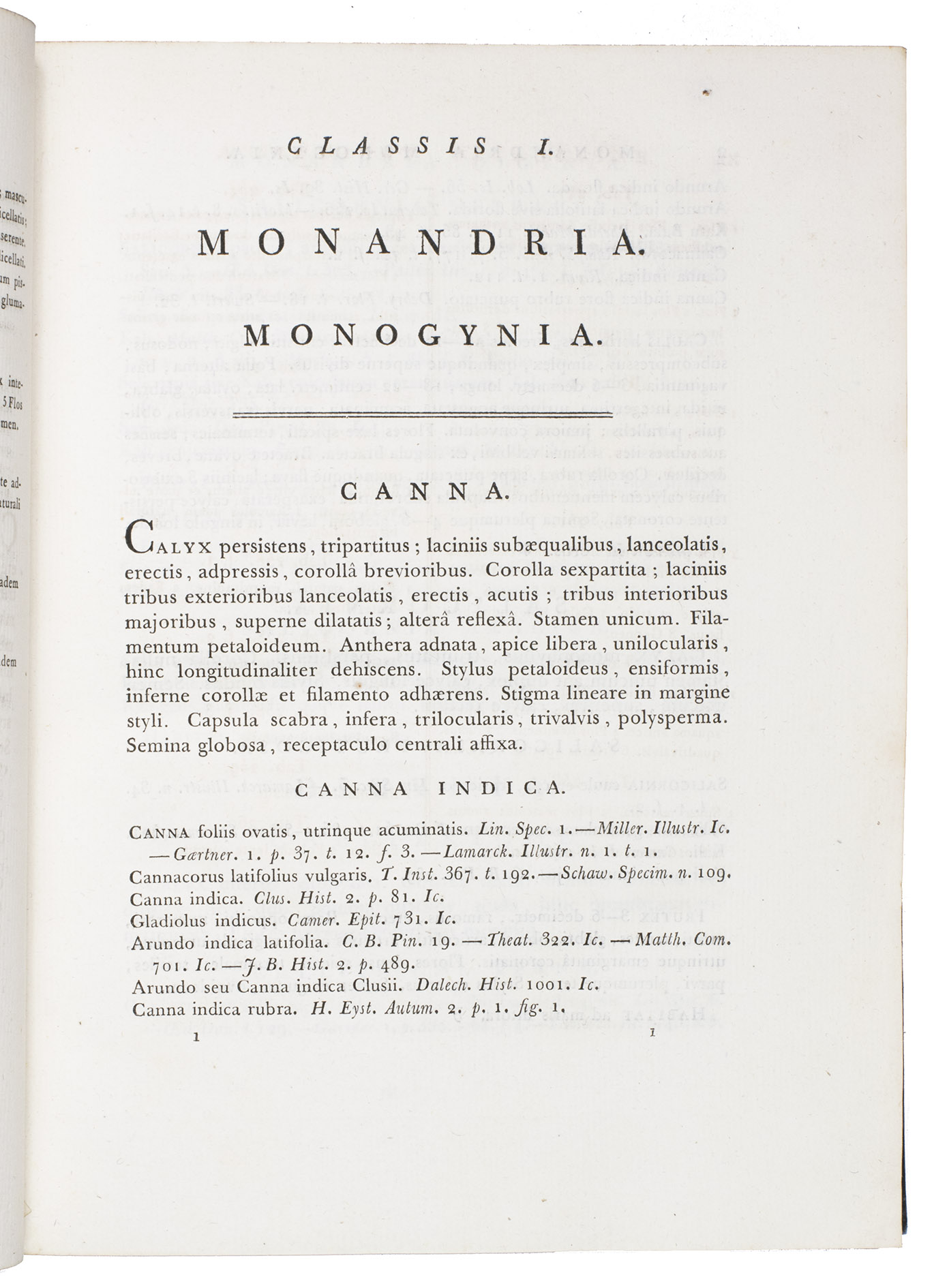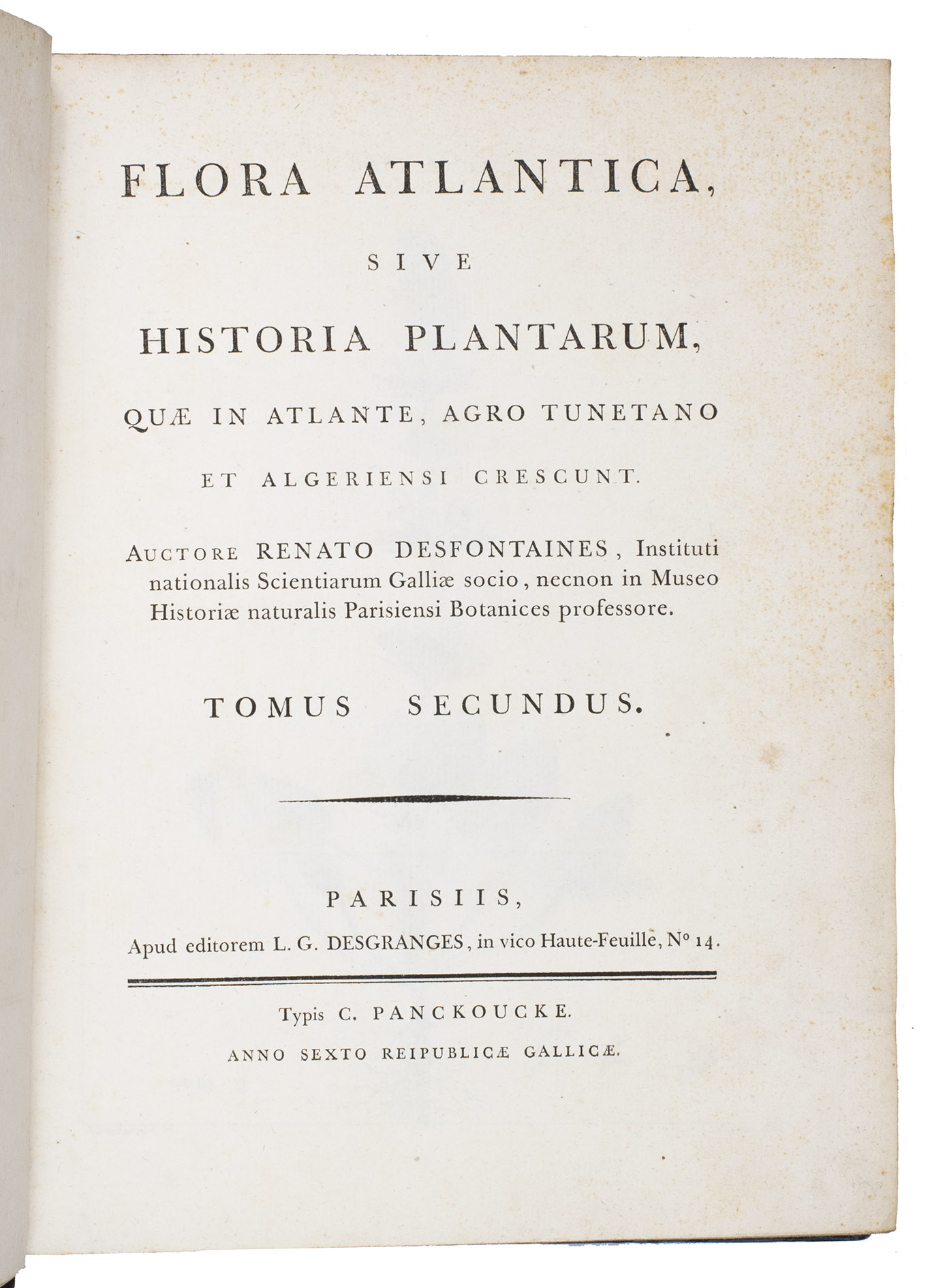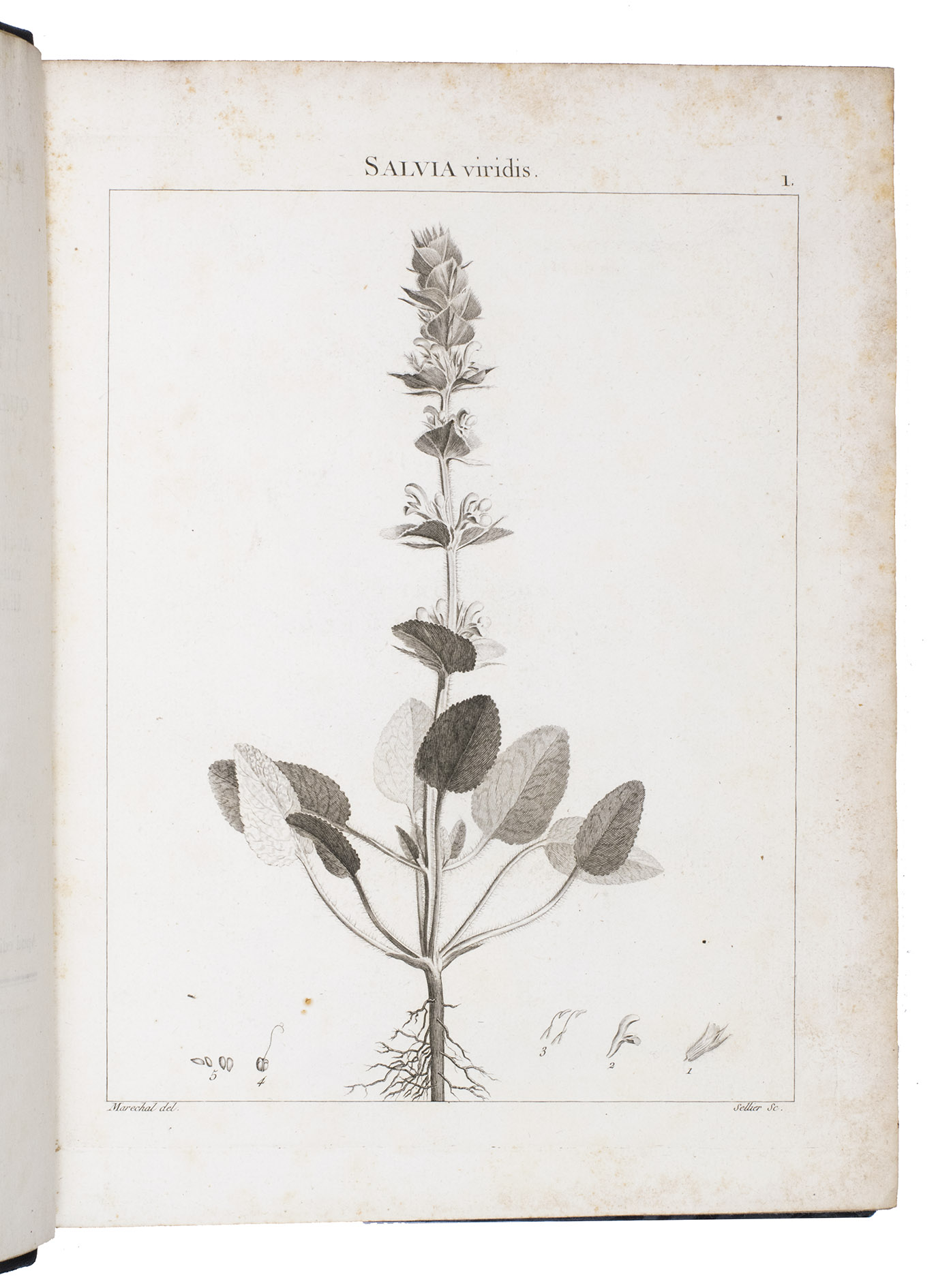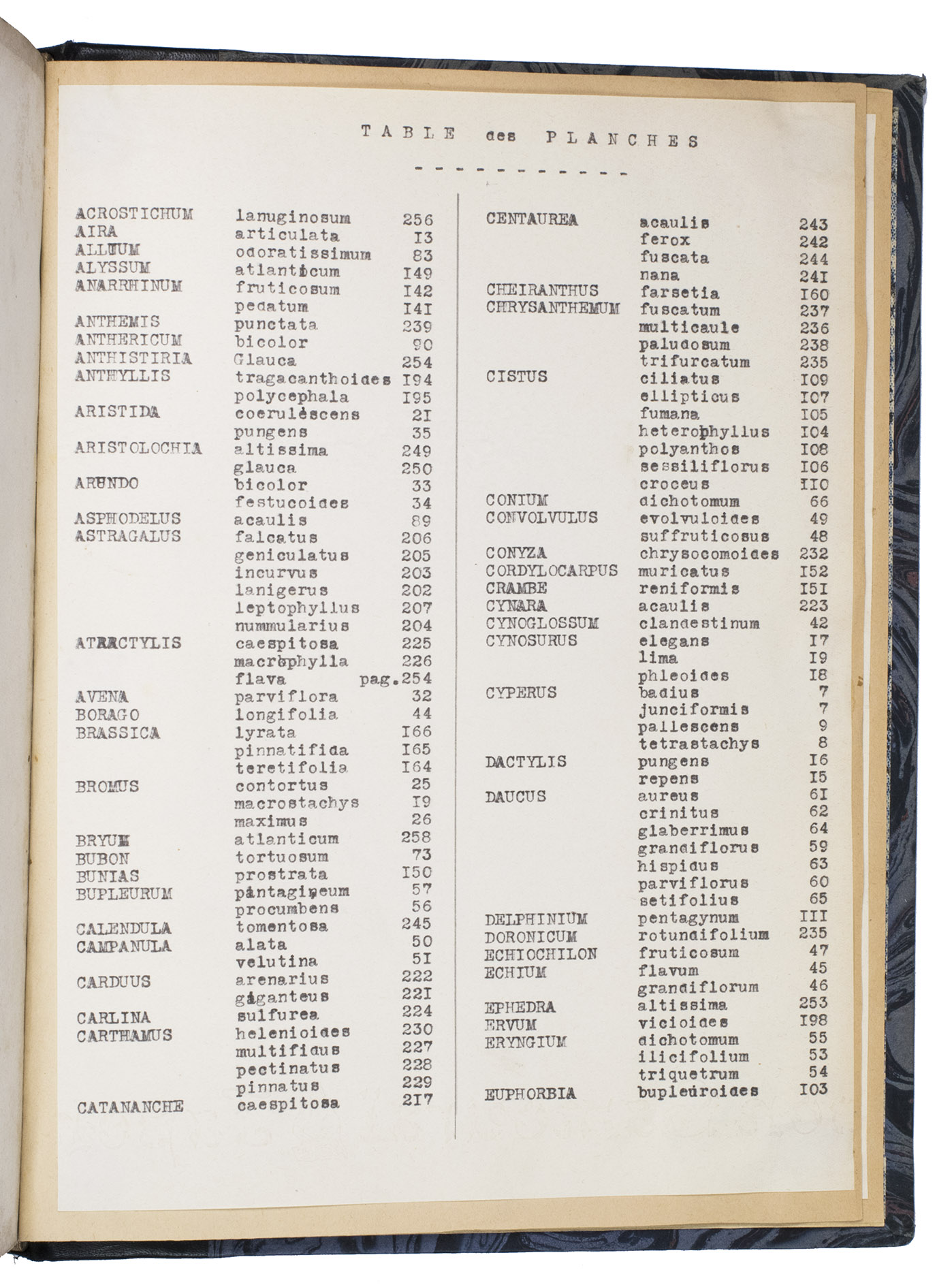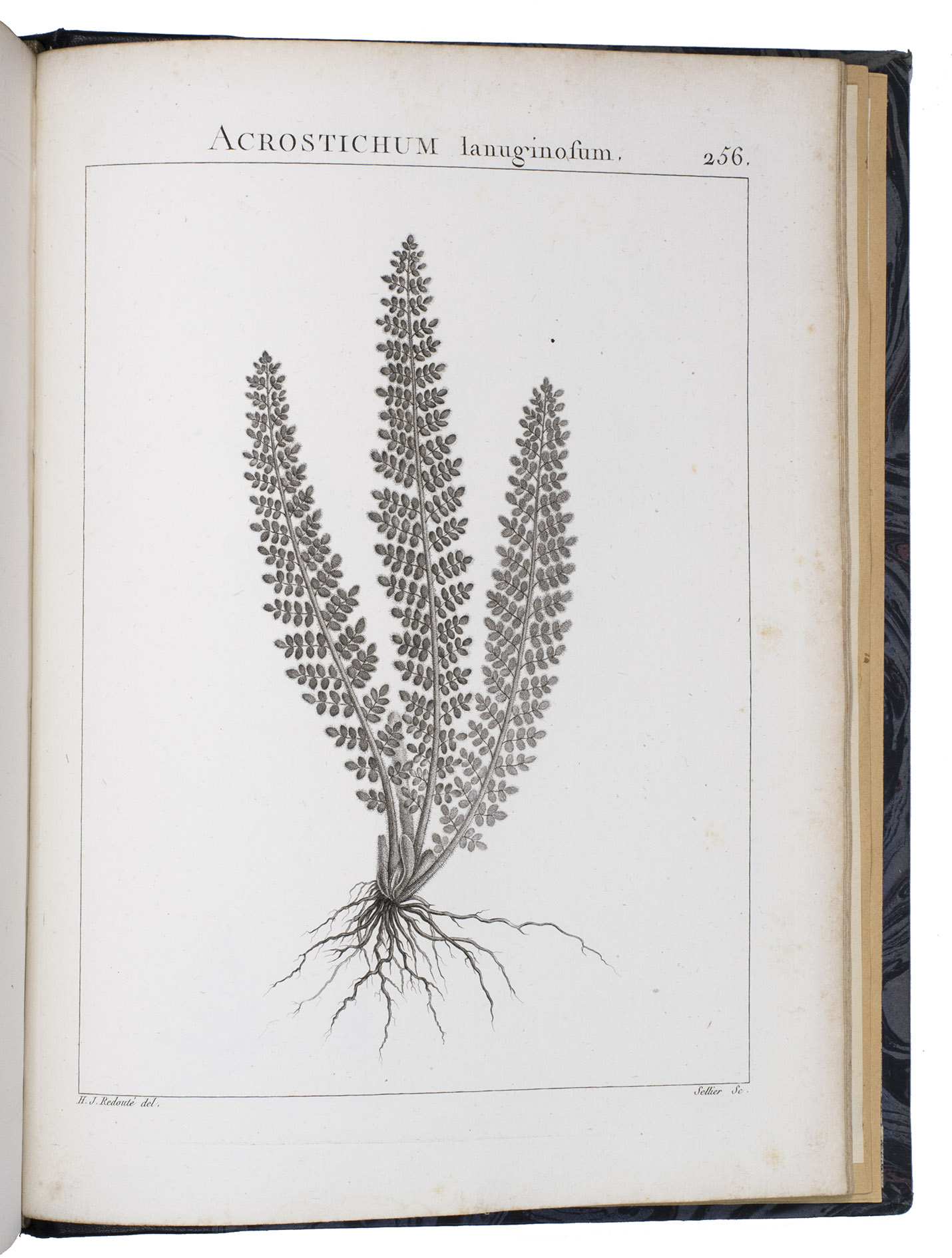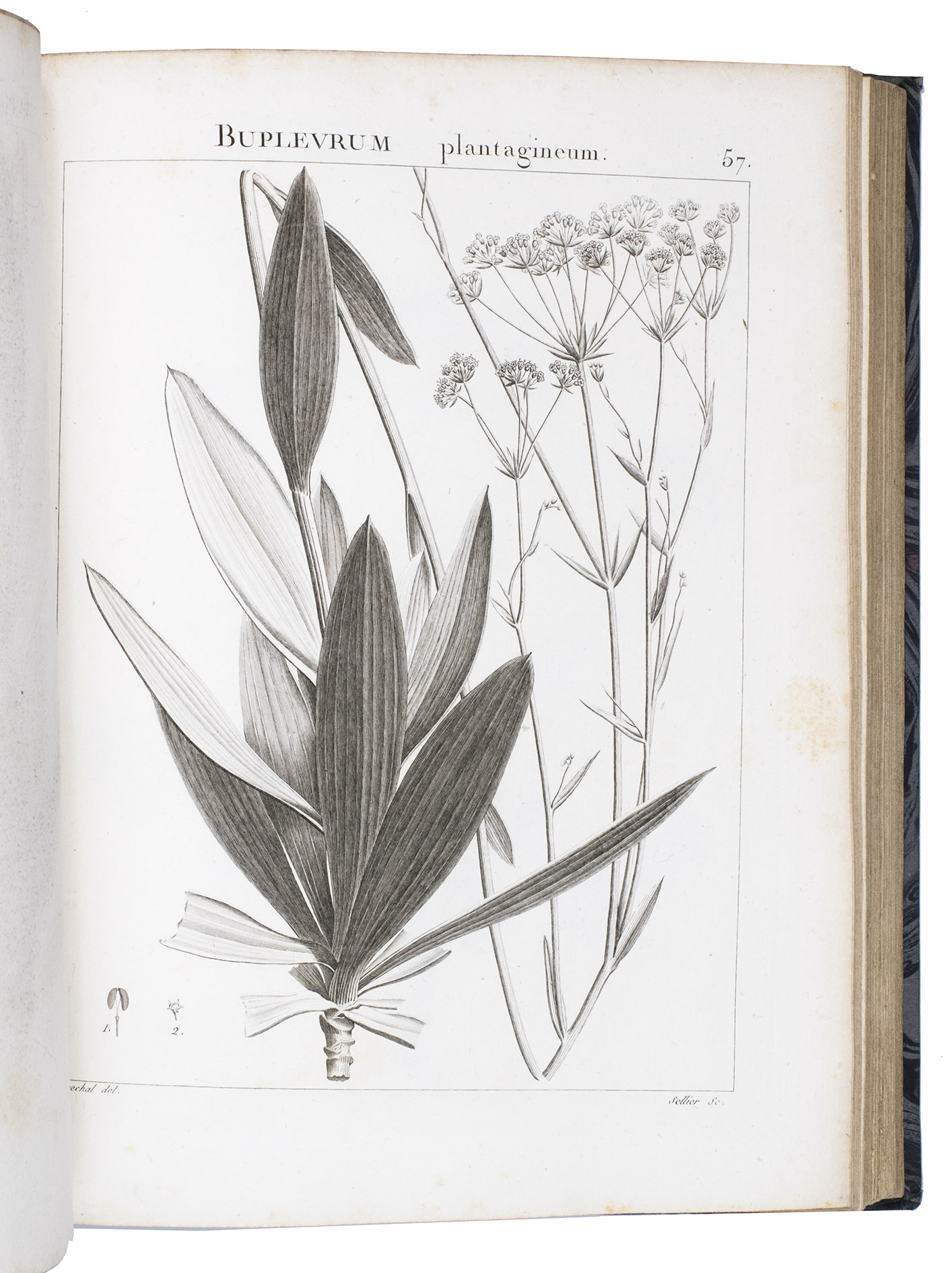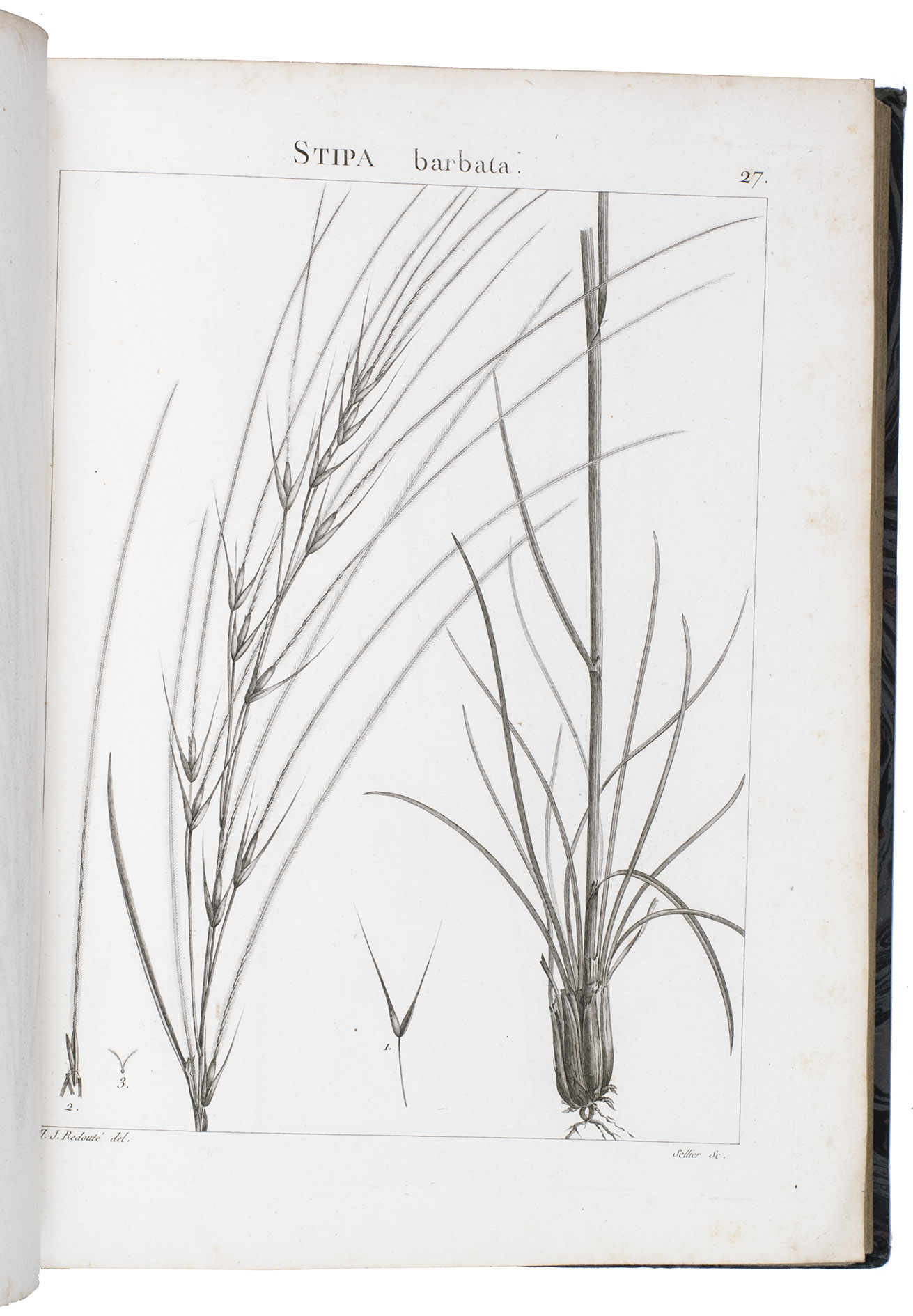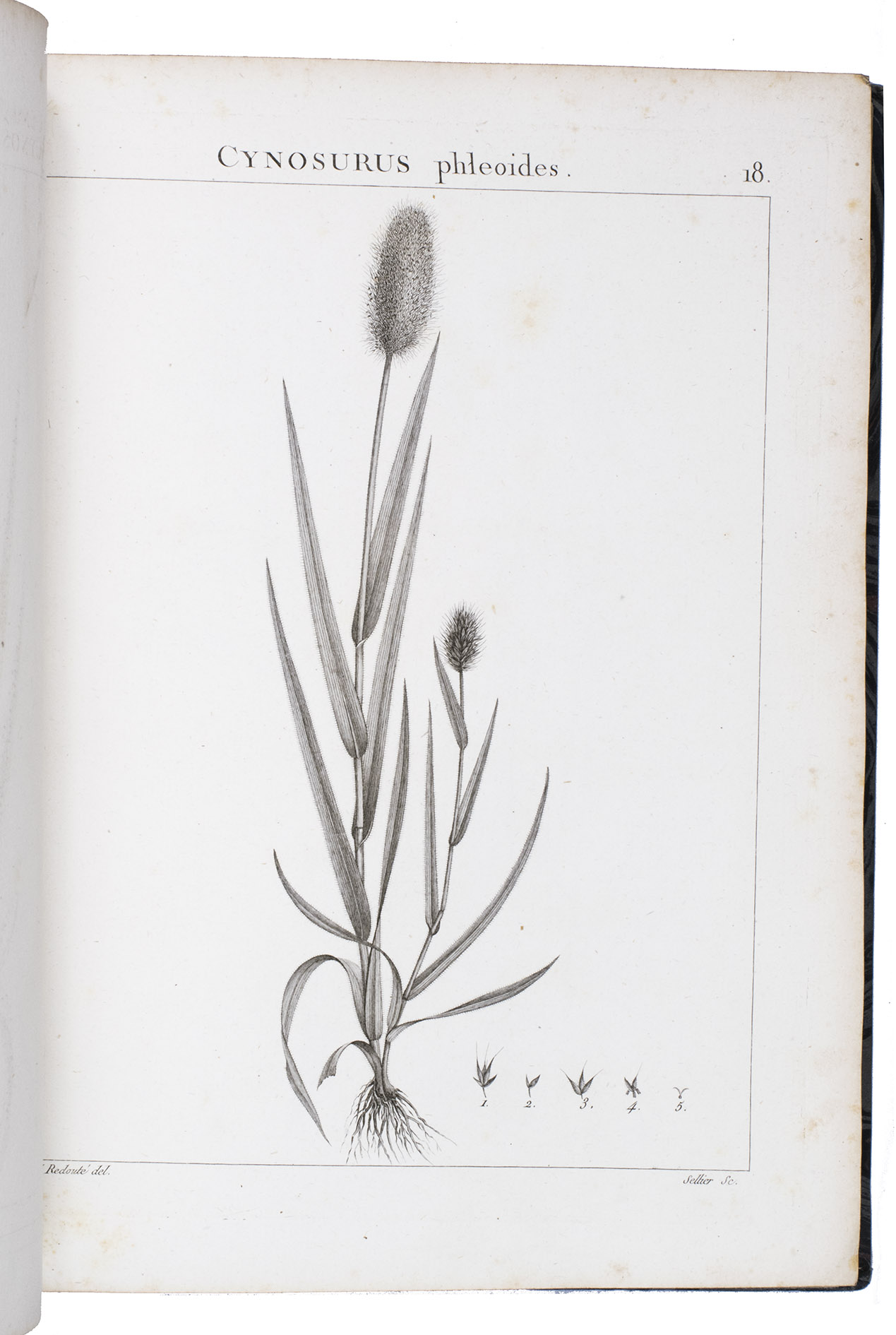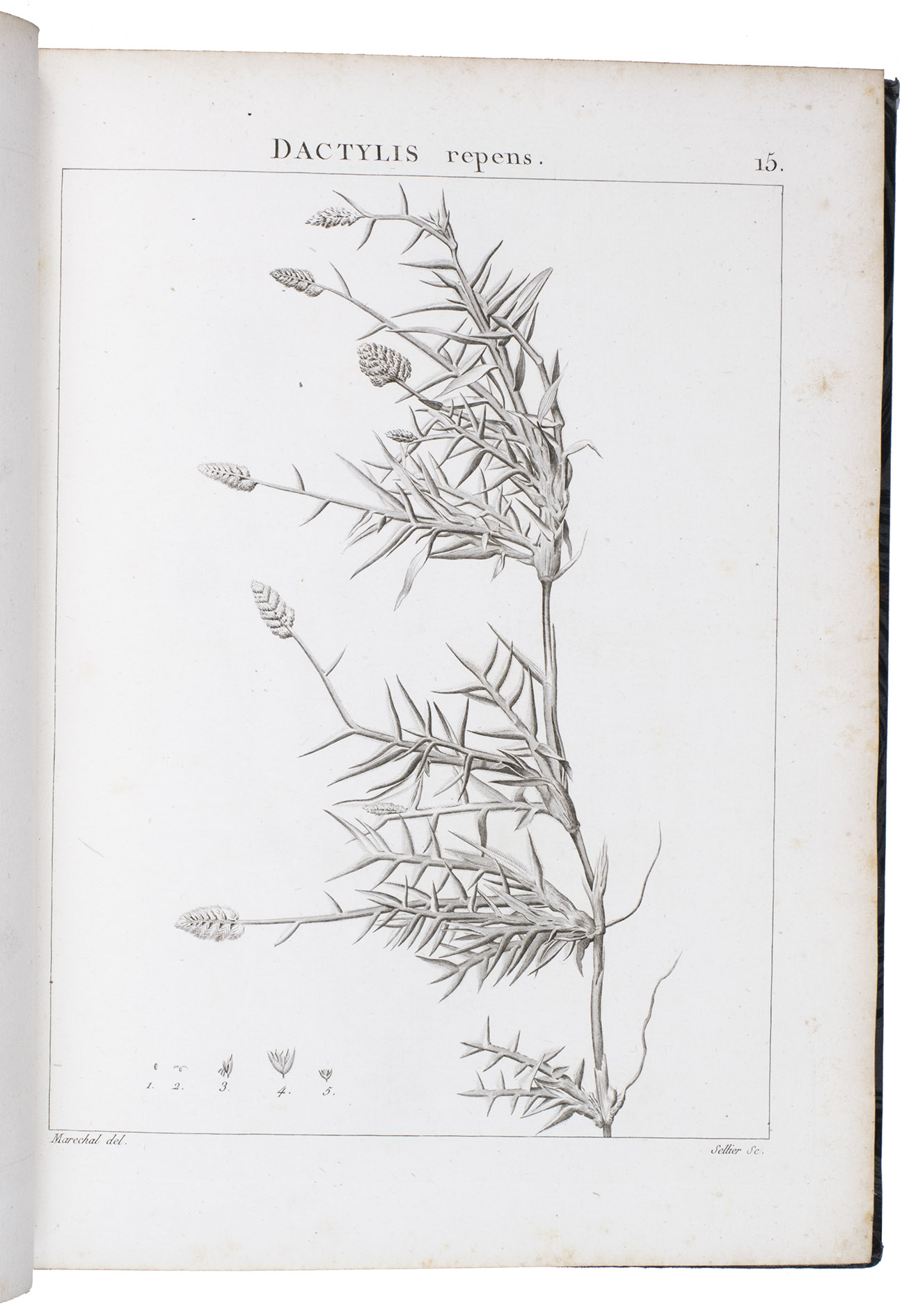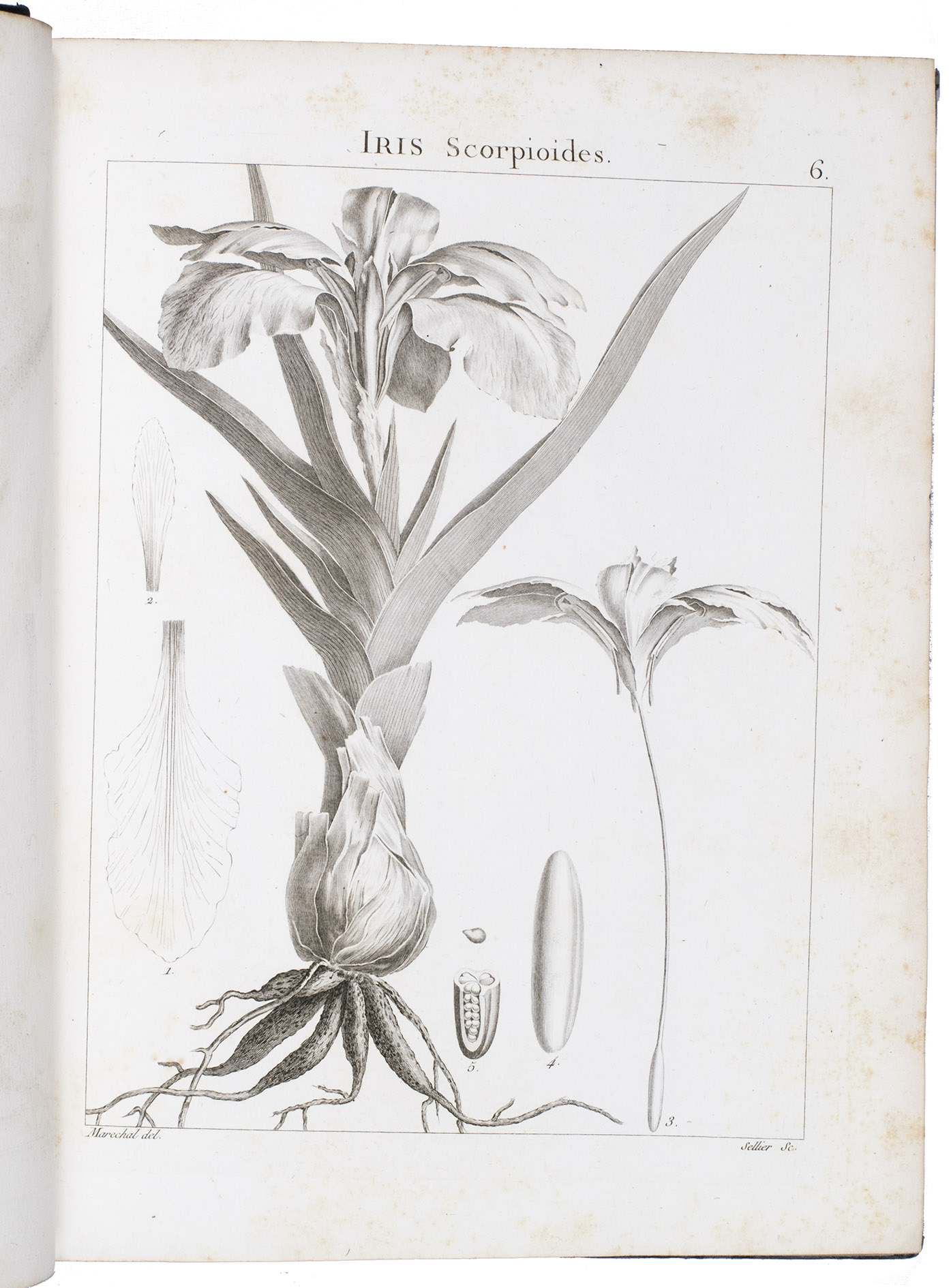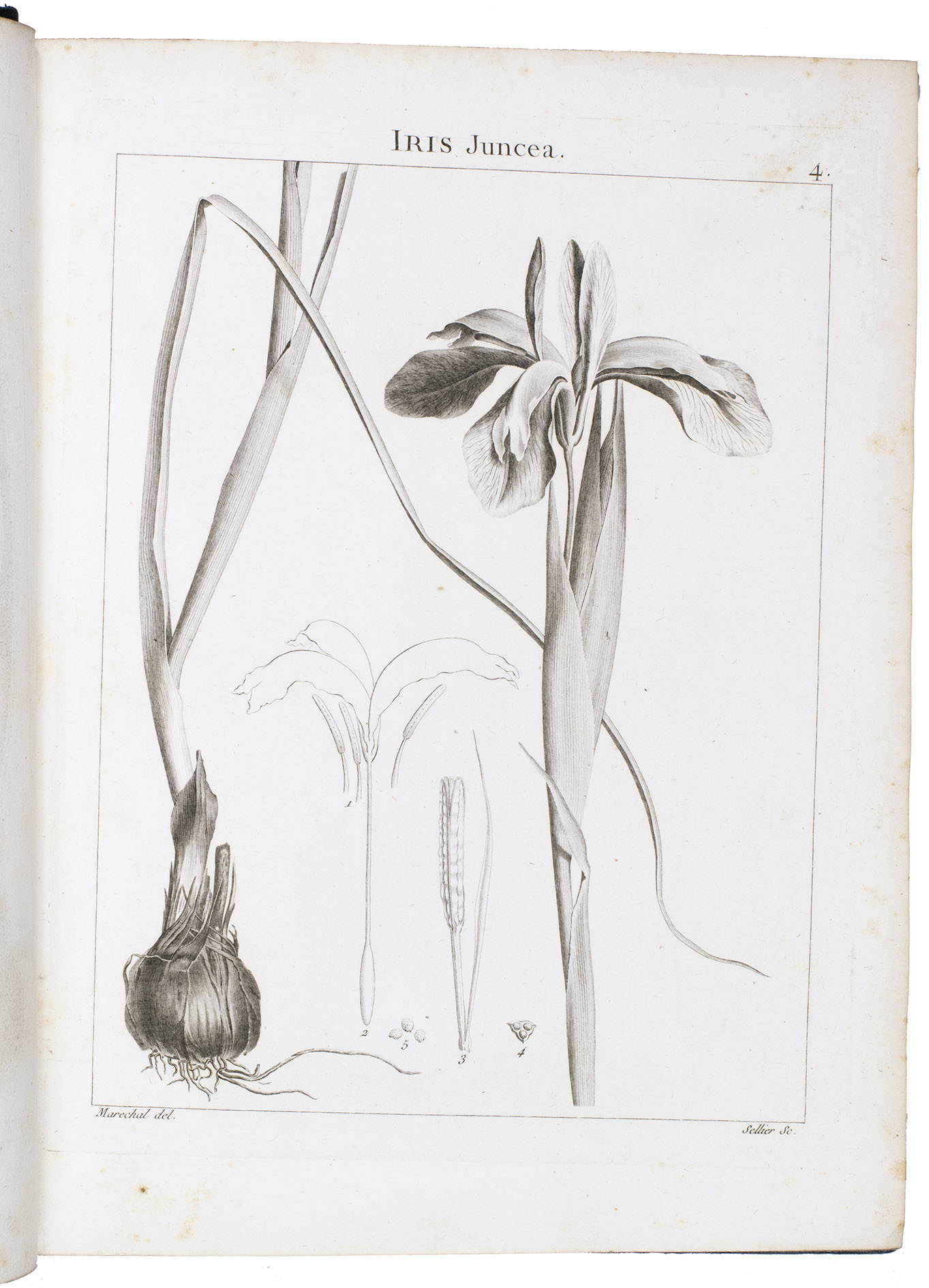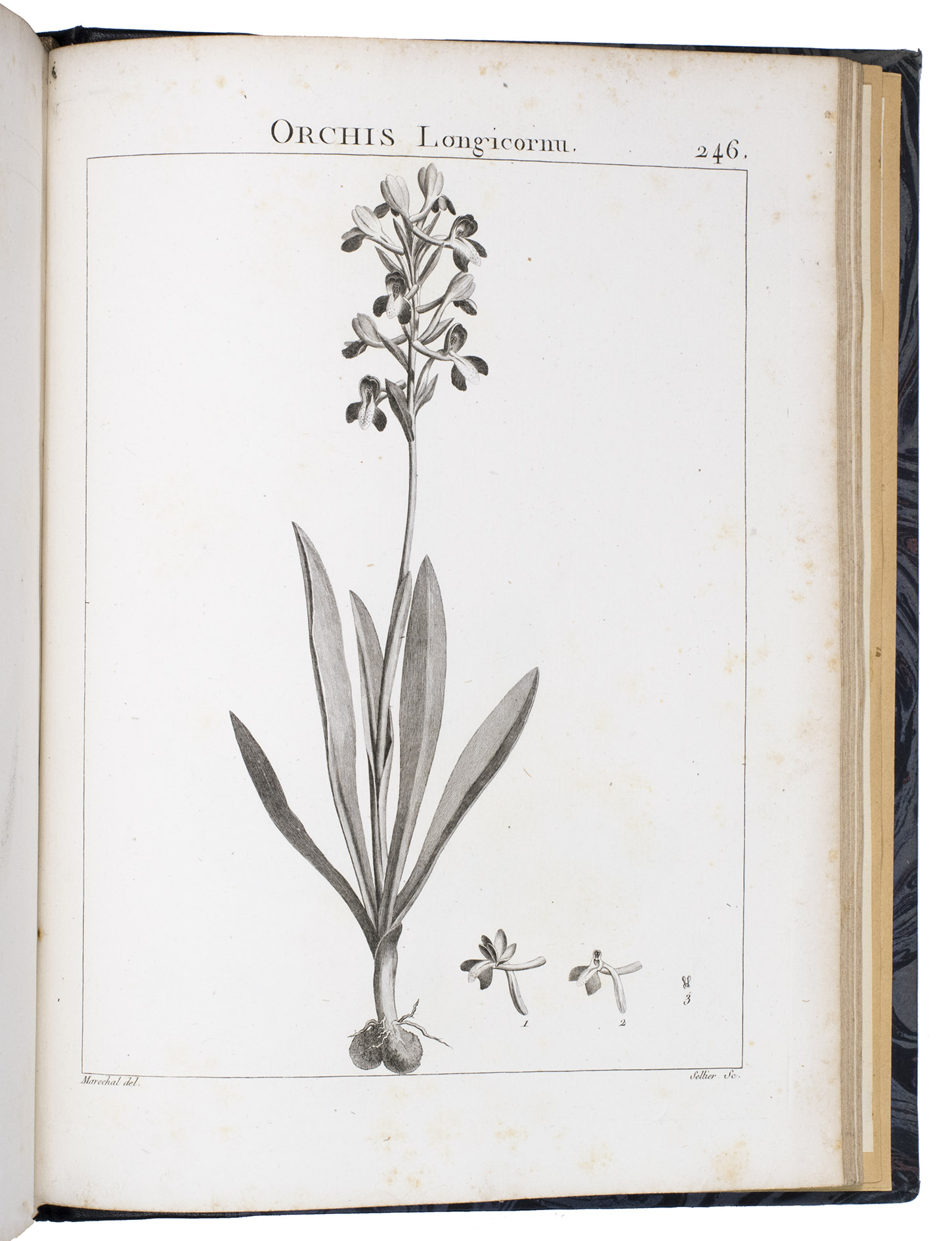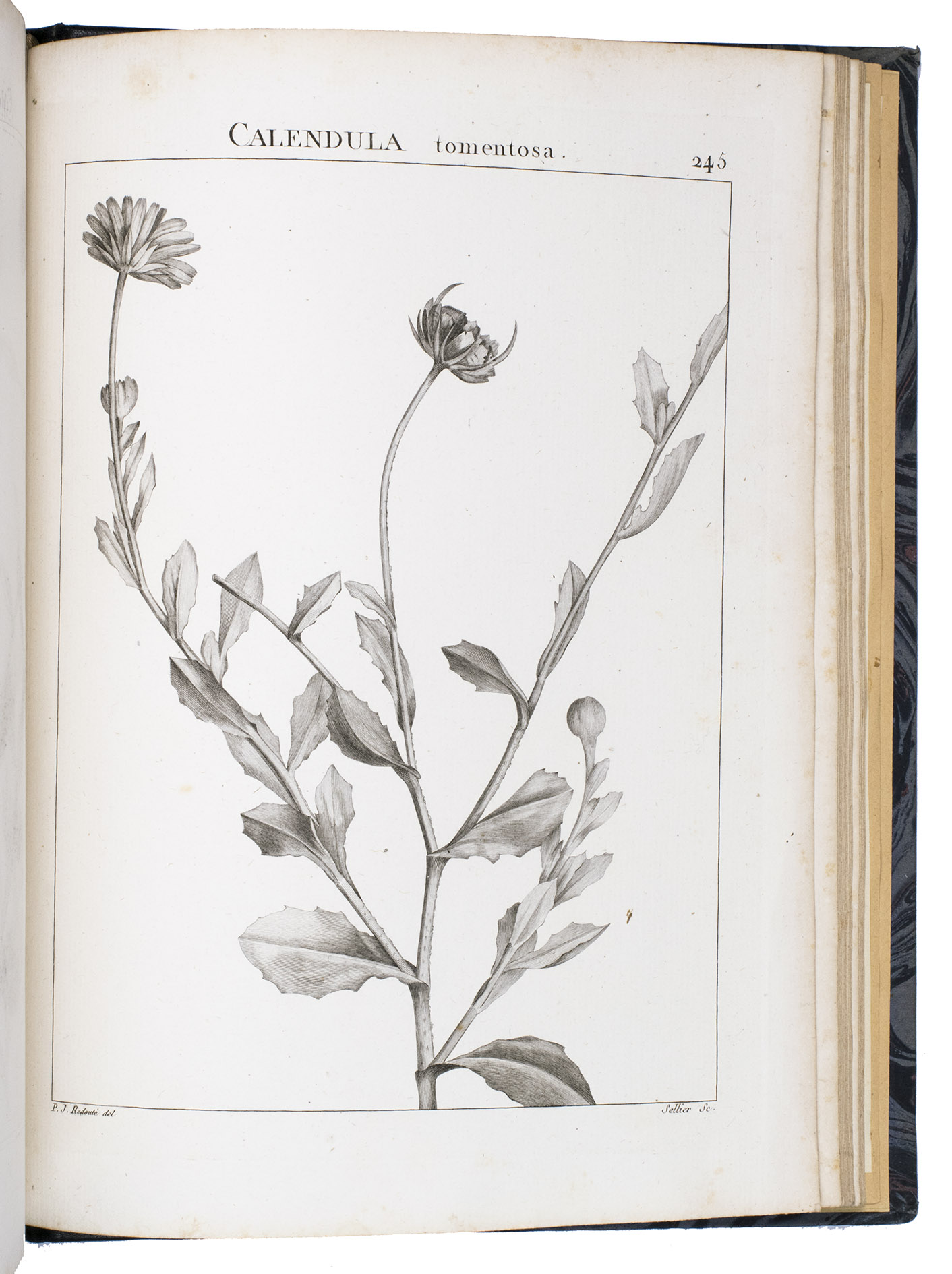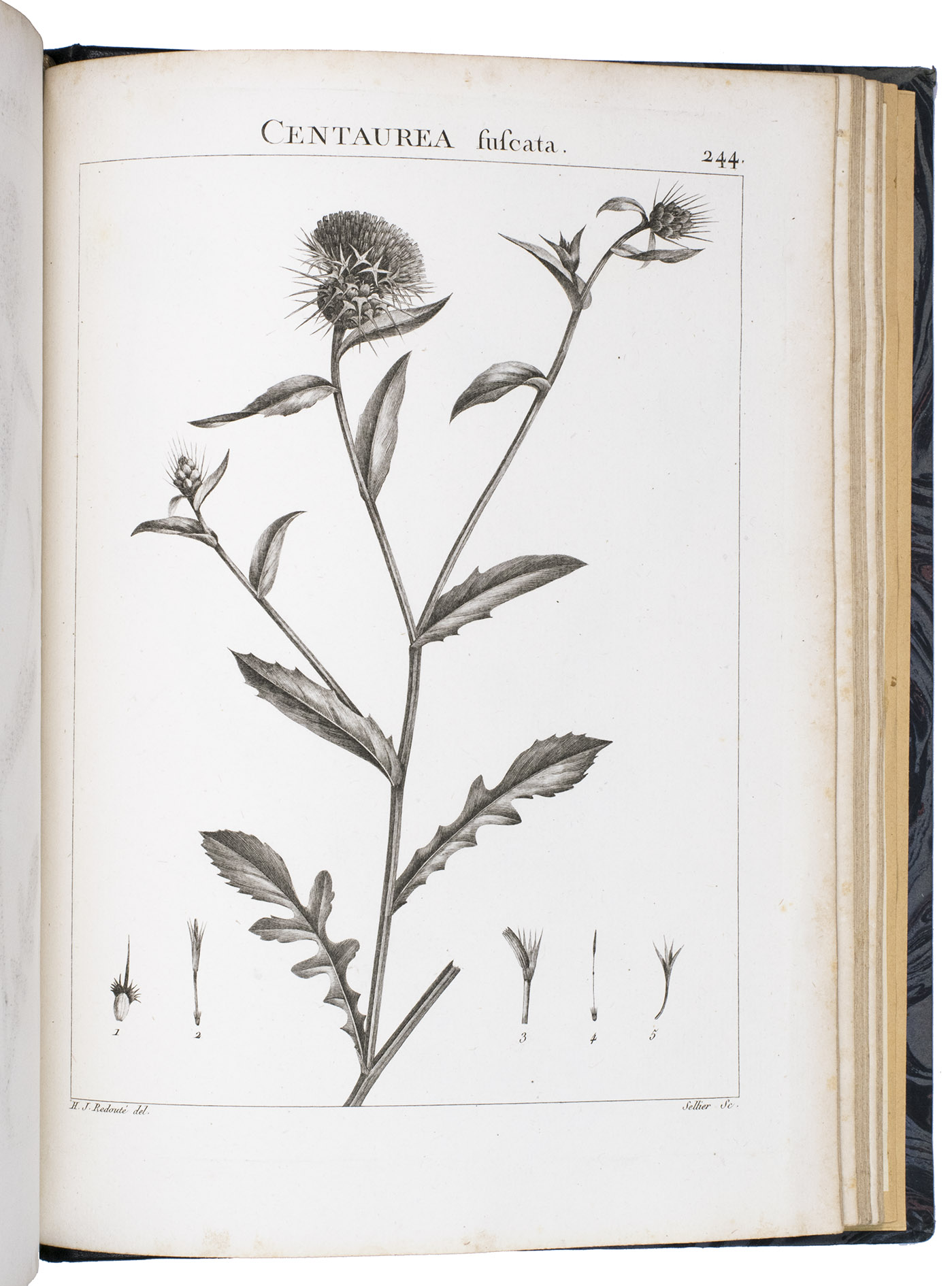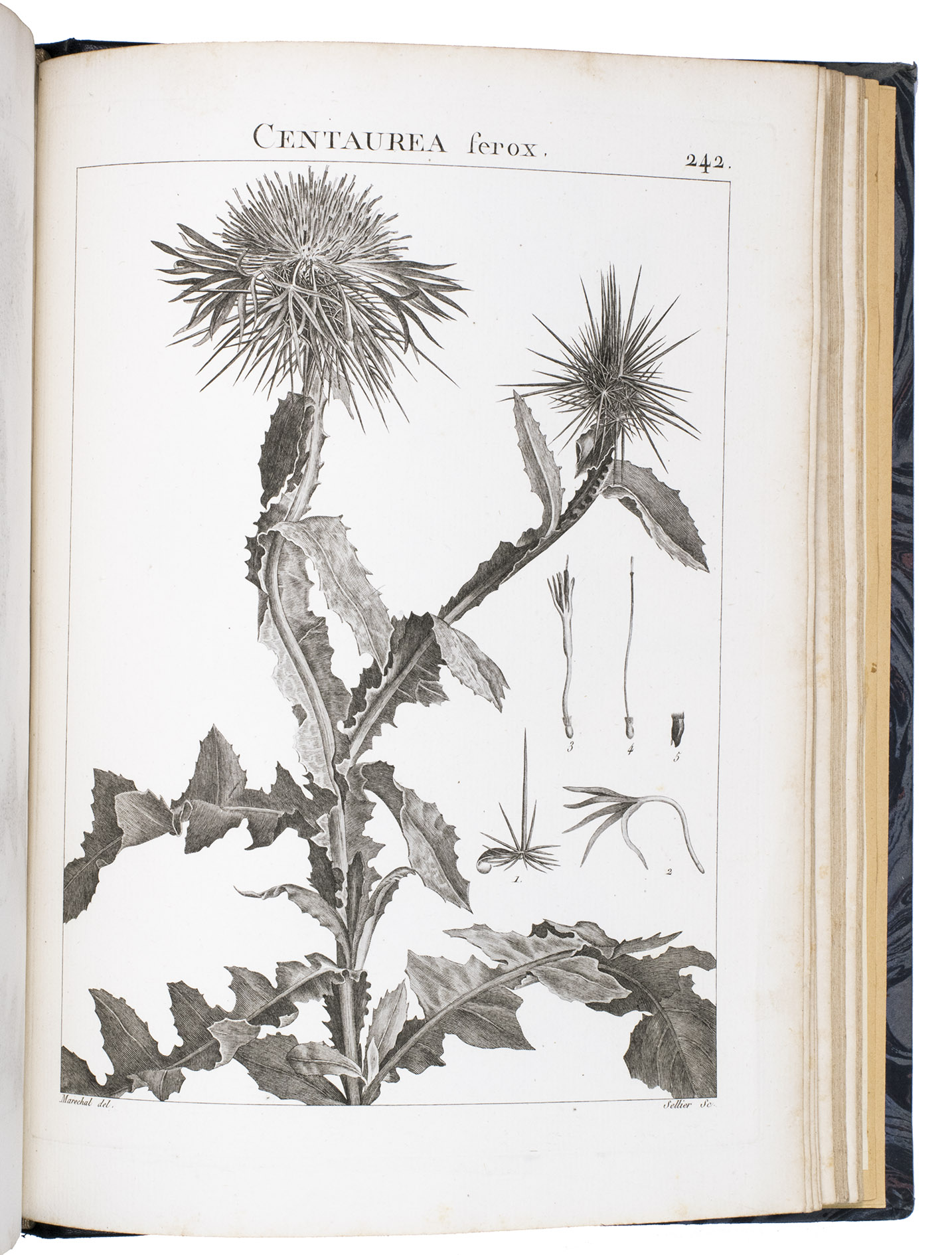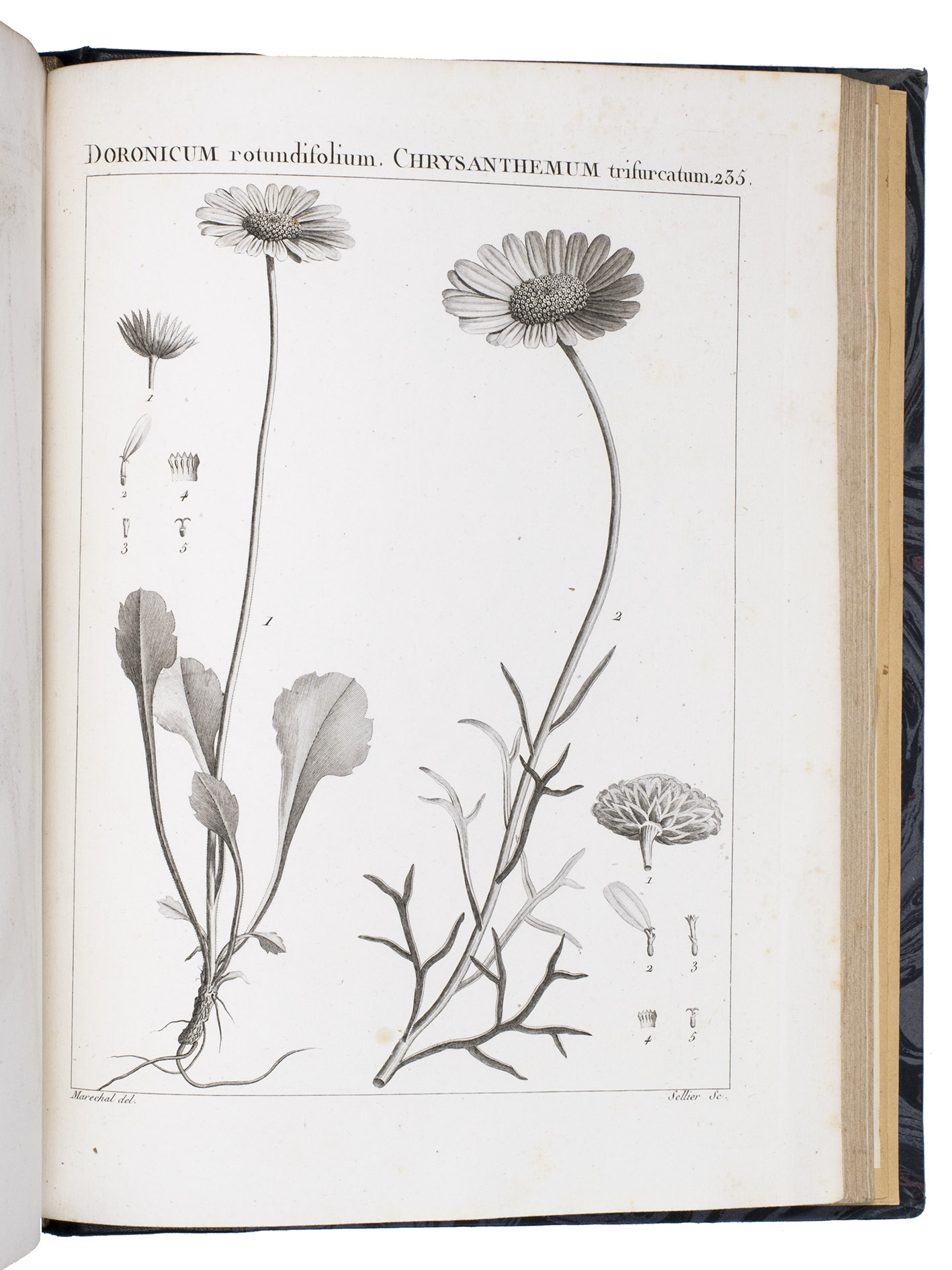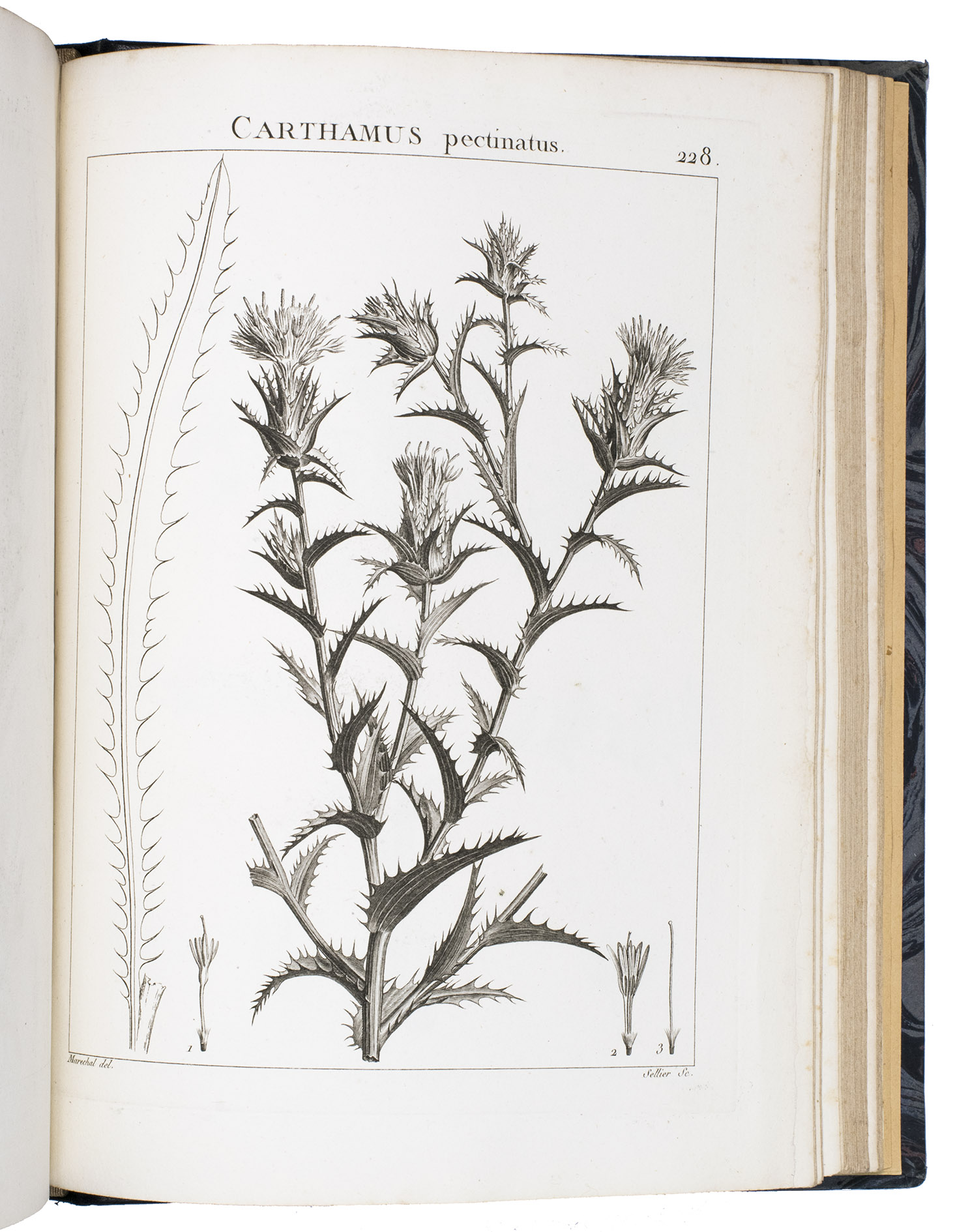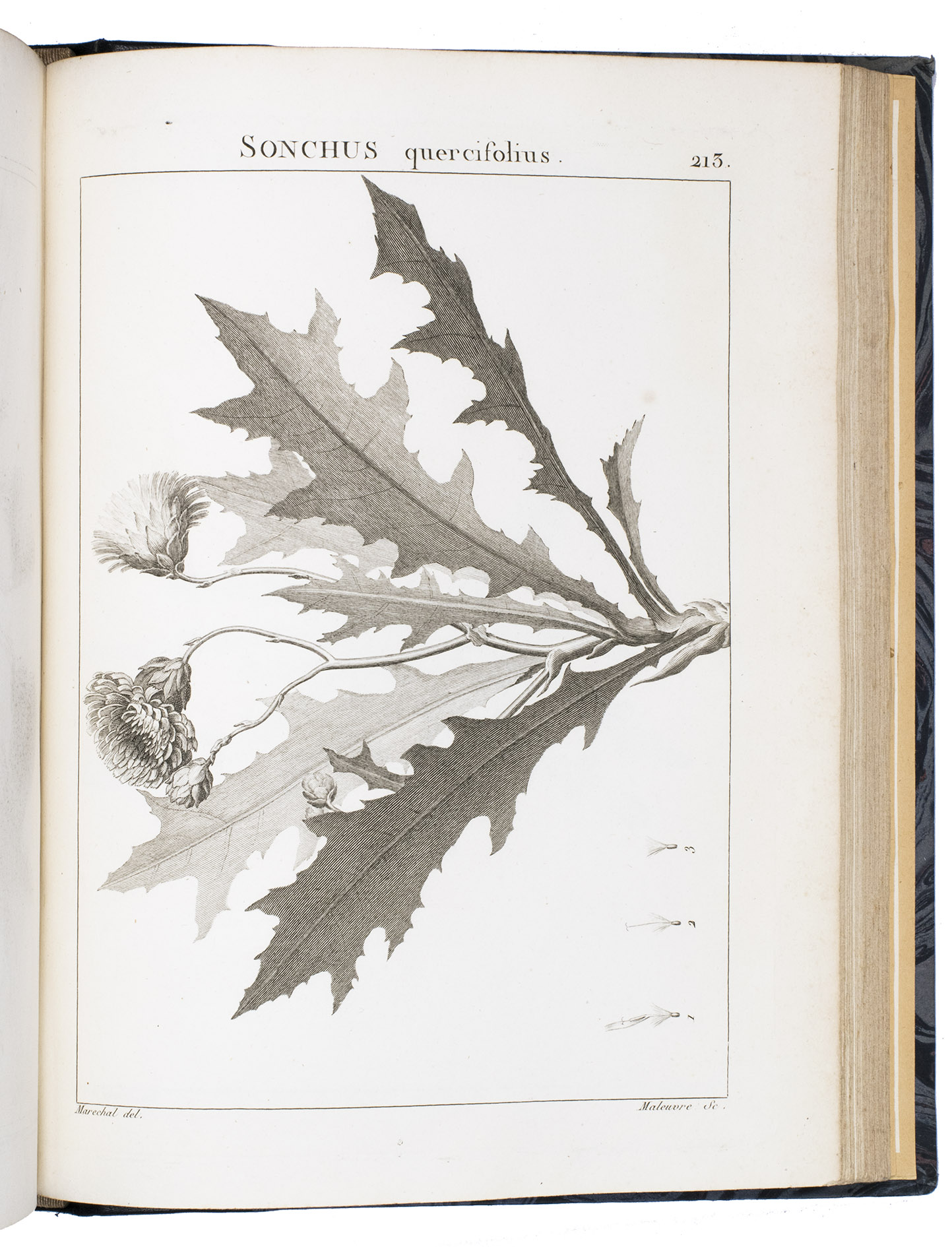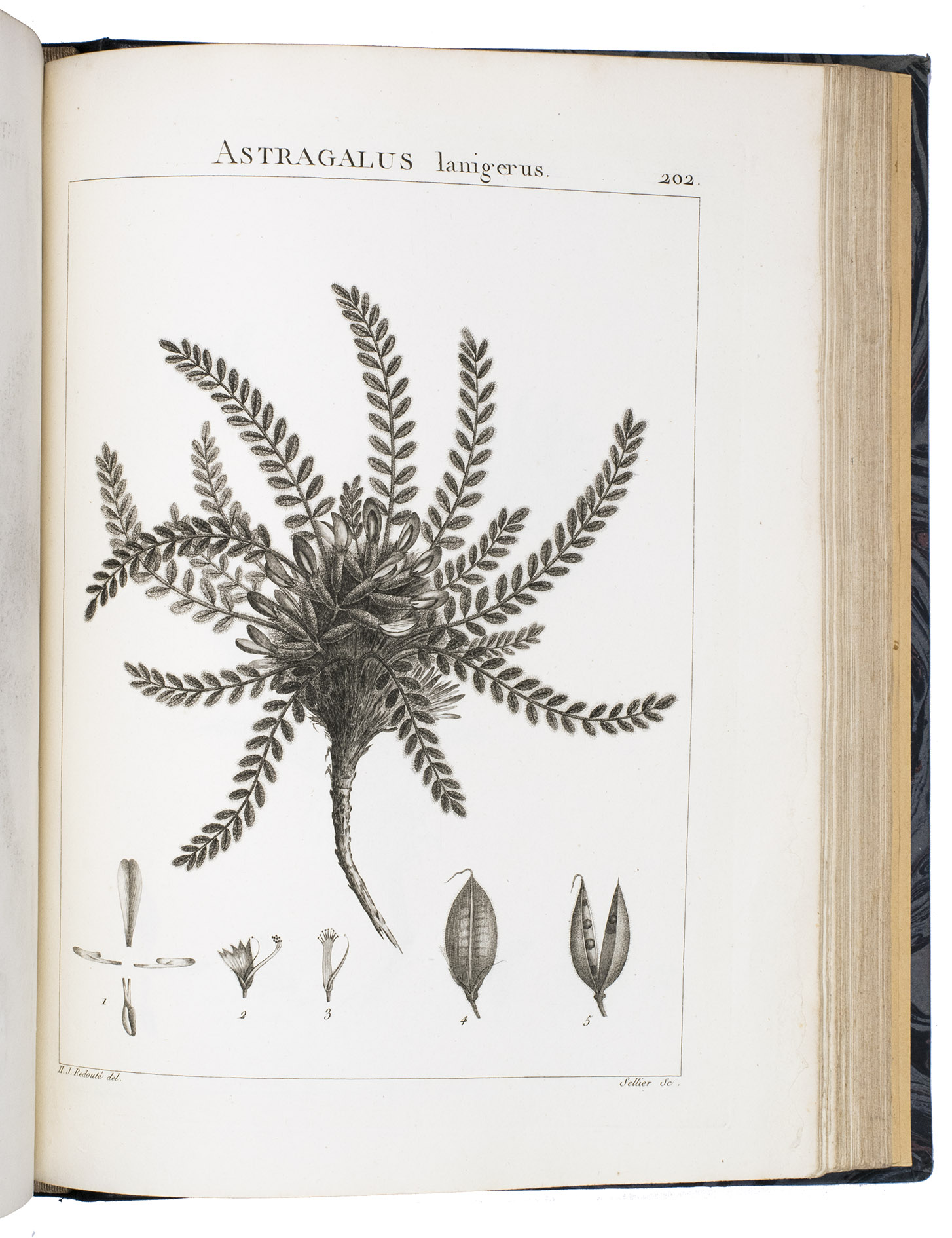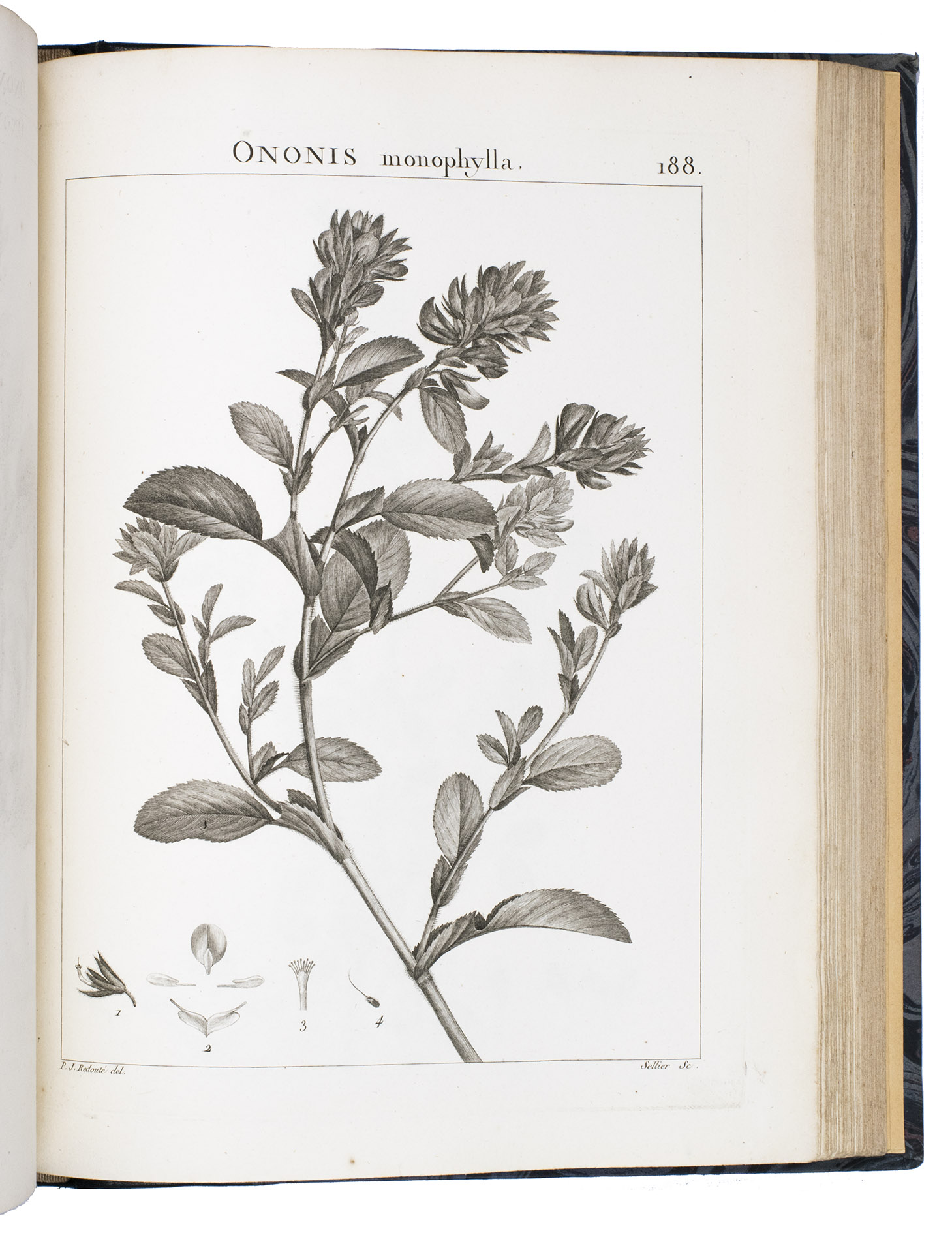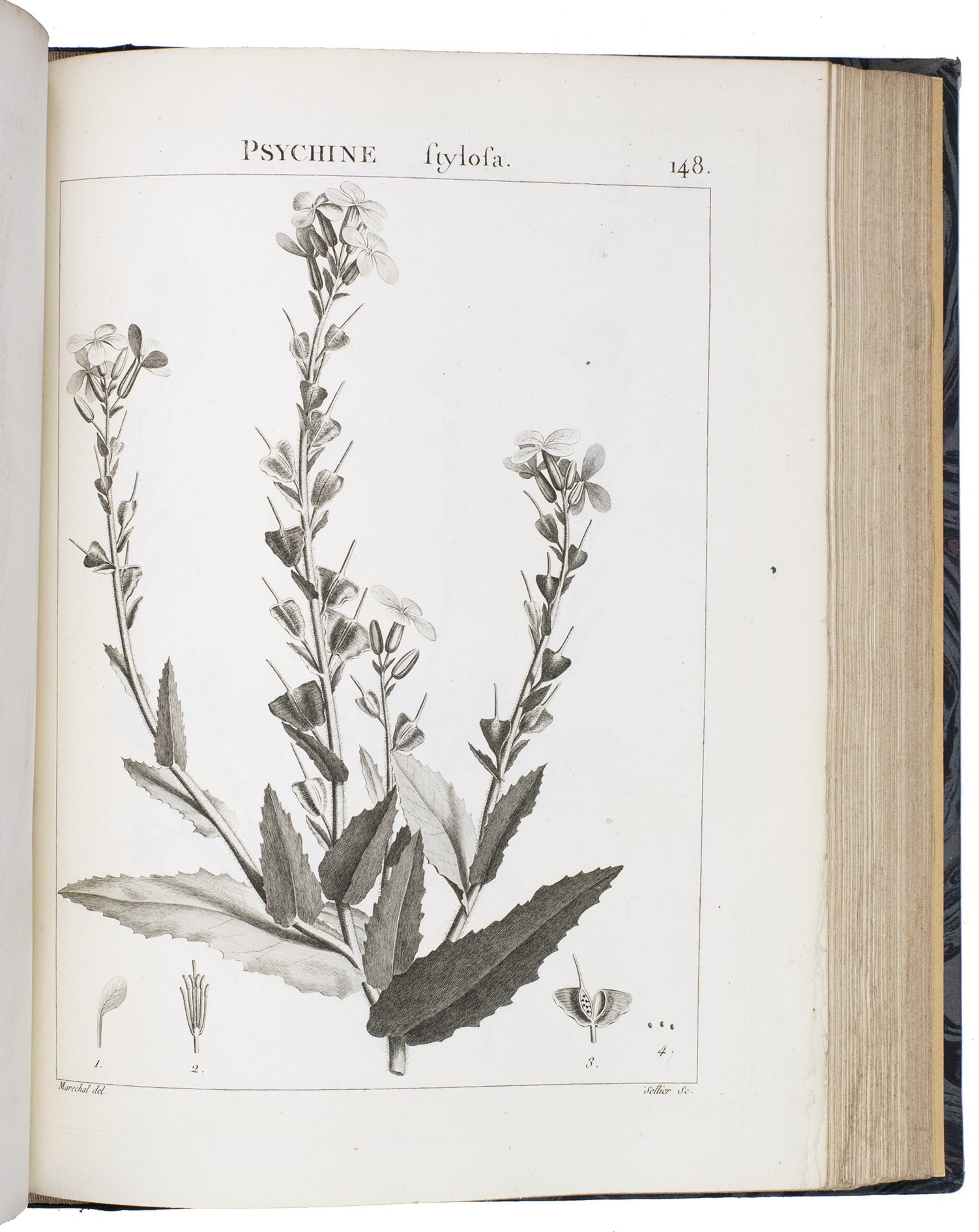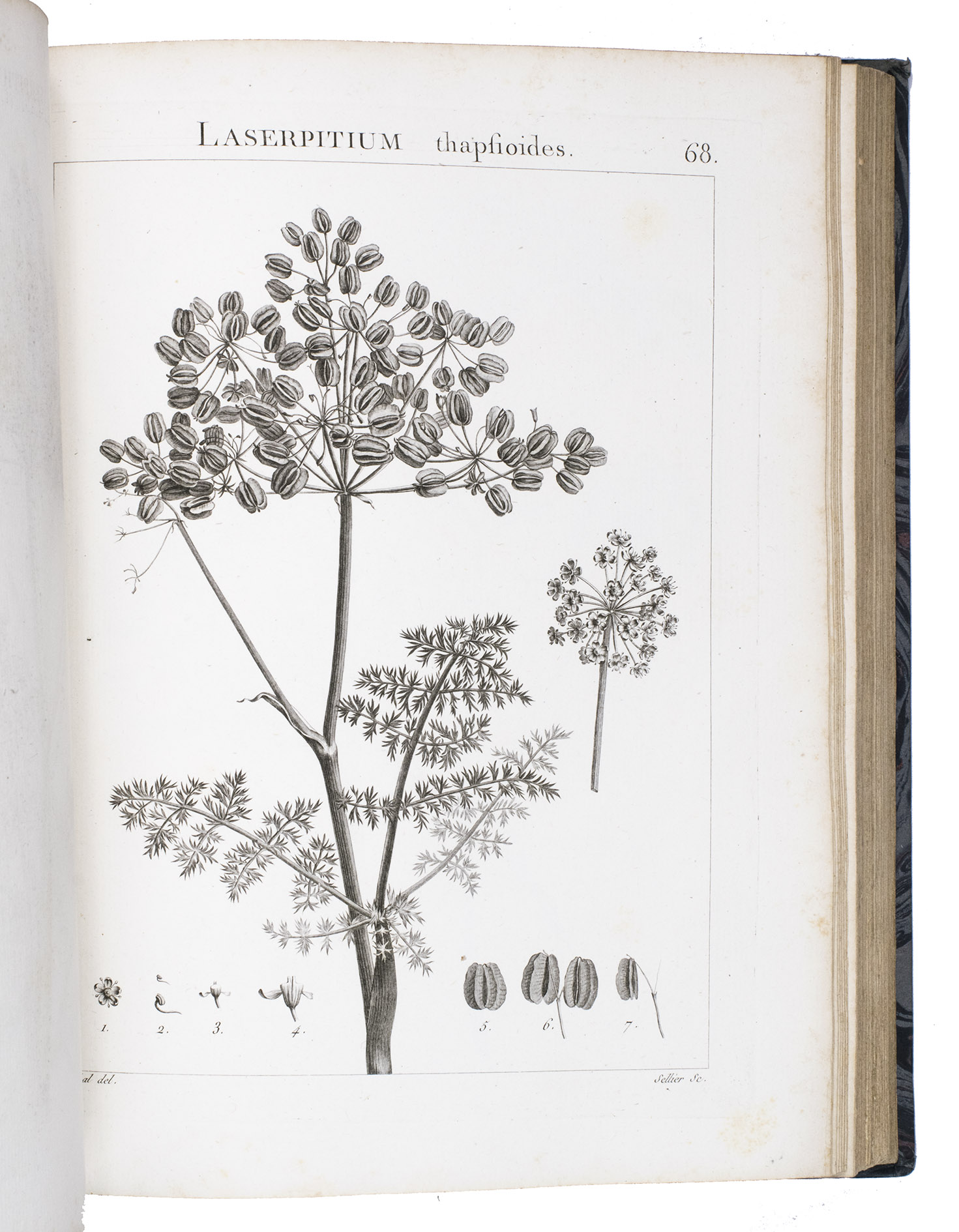DESFONTAINES, René Louiche.
Flora Atlantica, sive Historia plantarum, quae in Atlante, agro Tunetano et Algeriensi crescunt.
Paris, L. G. Desgranges, Imprimerie Panckoucke, 1798-1799 (anno sexto). 3 parts in 2 volumes. 4to. With "261" [=263] numbered, full-page, engraved plates. Late 19th-century black morocco. [6], XX, 444; 458 pp.
€ 6,950
First edition of an important and richly illustrated botanical work on flowering plants from Algeria and Tunisia, with 300 genera that were completely new to science at the time. The highly detailed engravings are incredibly crisp and clear. These plates have been described as: "Very fine and beautiful work, representative of the best line engraving" (Dunthorne).
The work was written by French botanist René Louiche Desfontaines (1750-1833), who was one of the first to make the important distinction between monocotyledonous and dicotyledonous plants. He collected all the genera described in the work during a two-year research expedition to Algeria and Tunisia (1783-1785). The first volume of the work describes the 1520 different plant species and genera he found and divides them into 24 classes, according to Linnaean taxonomy. The second volume contains 263 beautifully engraved plates of many of the described plants. The work was originally issued in 9 parts between April 1798 and August 1799. The present copy contains all parts, including all the plates.
Desfontaines studied medicine in Paris, but became interested in botany after attending lectures by Louis Guillaume Lemonnier (1717-1799), professor of botany at the Jardin des Plantes. Desfontaines was a talented scholar and was elected as a member to the Académie des Sciences in 1783. After his return from North-Africa in 1785, he replaced Lemonnier as botany professor. Desfontaines established a herbarium with 1480 plant specimens that he had collected during his research expedition, which he left to the city of Paris after his death. Flora Atlantica is considered his most important work.
The engravings in Flora Atlantica are all signed. They were all engraved by François Noël Sellier (1737-?) and designed by various artists, including painter and botanist Pierre-Joseph Redouté (1759-1840) and his brother Henry-Joseph Redouté (1766-1852).
With a white, round label with a number on the front pastedown of both volumes ("288A" in vol. 1 and "288B" in vol. 2), an ownership annotation of the previous owner, botanist Bernard de Retz (1910-2004) in pencil on the free flyleaf of the first volume ("B. de Retz") and 3 printed leaves with a table of contens for the plates mounted on the back flyleaves of the second volume. The edges and corners of the boards are somewhat scuffed and the leather on the spine is somewhat scratched. Some of the leaves are lightly foxed. Otherwise in very good condition. Dunthorne 92; Nissen, BBI 475; Pritzel 2176; Sitwell, S., Great flower books, p. 89; Stafleu & Cowan 1392; Stearn, W., Dates of publication of some floras of North-west Africa. In: Journal of the society for the bibliography of natural history, 1, 1938, pp. 147-148.
Related Subjects:
